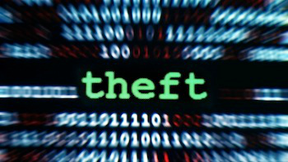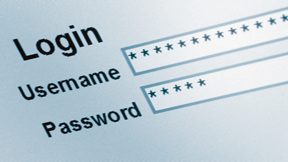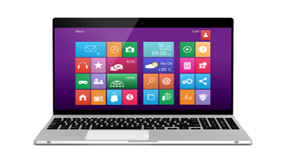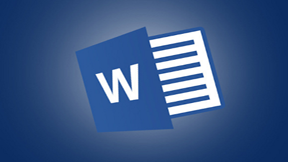|
|
Does your business have a cybersecurity plan?

Here’s an interesting fact: In 2012, companies with just one to 250 employees — what we commonly think of as small businesses — were the victims in more than 30 percent of all cyber attacks. Entrepreneur Magazine cites this statistic, taken from the 2013 Internet Security Threat Report from Symantec, to prove a point: Even small businesses need a cybersecurity plan.
Anti-Virus Software Matters
The Entrepreneur story says that the first step in any cybersecurity plan is anti-virus software. As the story says, this software is a must for small business owners. Anti-virus software isn’t perfect, and especially clever viruses can slip past it, but businesses that don’t have any anti-virus protection are setting themselves up for a massive hack.
Suspicious E-mails
Next, small businesses should make sure that their employees understand how important it is to delete e-mail messages that seem suspicious, whether sent by known or unknown senders. Businesses should also remind their employees to never click on the links contained in these suspicious e-mail messages. Not all employees will listen or remember. But many will.
Firewalls
Entrepreneur also recommends that small businesses use firewalls to protect their inbound and outbound network traffic. Firewalls can keep hackers from tapping into a small business’ network. Firewalls can also block employees from accessing potentially dangerous Web sites.
Top ↑
|
Guilty of these bad tech habits?

No one is perfect. We all have bad habits. Some of us smoke. Some eat in our cars. Some write e-mail messages in all capital letters. Here’s the good news, though. When it comes to technology, it’s relatively simple to identify our bad habits and break them. PCWorld magazine recently ran a list of the most common bad tech habits. Took a look at these tech mistakes. Do you suffer from any of these bad tech habits?
Easy Target
Some of the worst tech bad habits identified by PCWorld make you an easy target for thieves. For instance, do you ever leave your smart phones or tablets sitting at your booth in the coffee shop while you run back to the counter to get another shortbread cookie? Leaving your devices unattended and in plain sight can make it easy for criminals to quickly snatch them and disappear. Or what if you spend all your waking minutes staring at your smart phone screen without taking notice of your surroundings? This bad tech habit can hurt, too. While you’re staring at your screen, you don’t notice that suspicious guy walking close to you. Before you know it, the guy’s popped you in the face, grabbed your smart phone and run away.
Hurting Your Health
Bad tech habits can damage your health, too. Maybe you sit all day hunched in front your computer. This bad posture can lead to serious back pain. It can also cause carpal tunnel syndrome. The solution here? Sit up straight, take frequent computing breaks and purchase a comfortable chair that places less strain on your back. Speaking of breaks, another bad tech habit is not taking any. As PCWorld says, your can hurt your eyes, strain your back and blur your thought processes if you insist on spending the entire work day focusing on your computer screen. Remember to take regular breaks to keep yourself healthy.
Oops
What happens if your computer suffers a sudden hard-drive crash? Will you lose your important files? If you suffer from the bad tech habit of not backing up your files, you probably will. And do you reuse the same passwords frequently at several different Web sites? This tech habit can open you to a world of pain should someone crack that go-to password. Now, instead of gaining access to your personal information on one site, this cyber criminal can gain access to it on several. Finally, do you ignore the updates that publishers create for the software that you most frequently use? Don’t. Ignoring these updates can leave you vulnerable to hacks and keep you from fully enjoying your software.
Top ↑
|
Living Social hack exposes dangers of using one password at multiple sites.

Do you use one password to log into several Web sites? Do some of these sites contain important personal and financial information about you? If so, then you’re putting yourself in serious danger. Don’t believe it? Then check out tech Web site arstechnica’s recent story on a password breach at daily deal Web site LivingSocial.com.
Major Breach
According to the story, LivingSocial.com — which offers users daily bargains on everything from restaurants and spas to amusement parks and museums — recently suffered a massive security breach. The breach exposed the names, e-mail addresses and password information for up to 50 million LivingSocial users, according to arstechnica.
Changing Passwords
After the breach, Tim O’Shaughnessy, chief executive officer of LivingSocial.com, recommended that the site’s users change the passwords they use to access the deals site. He also recommended that users change any passwords that they use to access other sites that are the same or similar to what they use to log into LivingSocial. This, as arstechnica reports, is a bit of an understatement. If you use the same password to log onto Netflix, LivingSocial.com and your online bank, stop reading this story and immediately change these passwords. And do yourself a favor — don’t ever reuse a password for one site at another.
Change it Up
It can be difficult to remember dozens of passwords. And there are times when you simply want to log onto a site with a password that you’ve used dozens of times before because it’s easier than creating, and writing down, a brand-new access code. Don’t fall victim to this temptation. If a hacker cracks your password at one site, it’s not overly difficult for this cyber criminal to use the same one to gain access to your other Web sites, too, if you’re too lazy to create unique passwords at different sites. Yes, passwords are imperfect. But the more creative you are with them — and this includes creating separate passwords for each site you visit — the better off you’ll be.
Top ↑
|
Do you think Microsoft is going backward with its new logos?

They say that everyone is a critic. You can see this firsthand at the Quora knowledge-sharing Web site. Recently, a Quora user took Microsoft to task. This user wasn’t upset that Windows 8 was clunky and counter-intuitive. The user wasn’t upset, either, that Internet Explorer didn’t return the best search results. No, this user took Microsoft to task for its lack of artistic ambition. Yes, that’s right.
Too Simple?
This user argues that Microsoft isn’t putting enough time into designing artistic, aesthetically pleasing logos. Instead, the user writes, Microsoft is dashing off simplistic, minimalist logos. These logos, the argument goes, look as though graphics pros dashed them off in five minutes. The user adds that Microsoft has been dumbing down their logos since introducing Windows 8 and Office 2013.
The argument
Quora is a site that encourages debate. And debate quickly followed the original user’s criticisms. A small army of Quora users argued that Microsoft’s new logos – including ones for Internet Explorer, Microsoft Word, Microsoft Excel and Office – are actually rather stunning in their simplicity. Others argued that just because a logo is simple doesn’t mean that it didn’t require as much thought and planning as more complex designs. In fact, the prevailing theme of the counterargument is that sometimes simplicity is best. And when it comes to computer graphics, sleek, simple logos are often the most effective.
The Trend
It’s hard to argue with this last argument. Microsoft’s new logos do look sleek. And you can immediately tell which logo goes with which Microsoft program and that, of course, is the job of a logo. You can criticize Microsoft for a lot of things – especially for Windows 8 – but when it comes to logos, the company remains on the cutting edge.
Top ↑
|
Not using Word 2013? You’re missing out.

Have you been debating whether it’s time to upgrade to Word 2013? PC World says it’s time to stop dithering. The new version of Word is packed with features that can make you and your employees more productive than ever. Maybe you like that current version of Word that you’re using. That’s fine. But before you decide to stick with it, consider these nifty new features that come with Word 2013.
A better design tab
The first reason to upgrade to Word 2013? PC World points to the program’s new and improved design tab. Word 2013 lets users choose from a wide variety of themes, colors and fonts. And if you find a certain combination that you’d like to use all the time, you can click the “Set as Default” option to return these themes every time you create a new document. Microsoft Word 2013 also allows users to preview a document style before they apply it to the entire document.
A better reading experience
Maybe you use Word more often to read documents than to create them. If so, Word 2013 comes with a new Read feature that makes reading Word documents more pleasant than ever. First, the Read feature automatically resizes Word documents so that they fill your entire screen. Secondly, Read provides on-screen arrows that let you flip through pages or swipe the screen from either edge of the display if you’re using a touch-screen monitor. You can also click on images, charts or tables in Read mode to make them bigger, and easier to read.
PDF Viewing
Word 2013 makes editing and reading PDF documents an easier task, too. First, Word 2013 can open any PDF document. But that’s just the beginning. The program also allows you to edit PDF documents without bringing in a third-party application. According to PC World, you can also move images around a PDF document and edit any information contained in a table. For anyone who works with PDFs often, this is an amazing new feature.
Top ↑
|
|






Leave a Reply
Want to join the discussion?Feel free to contribute!